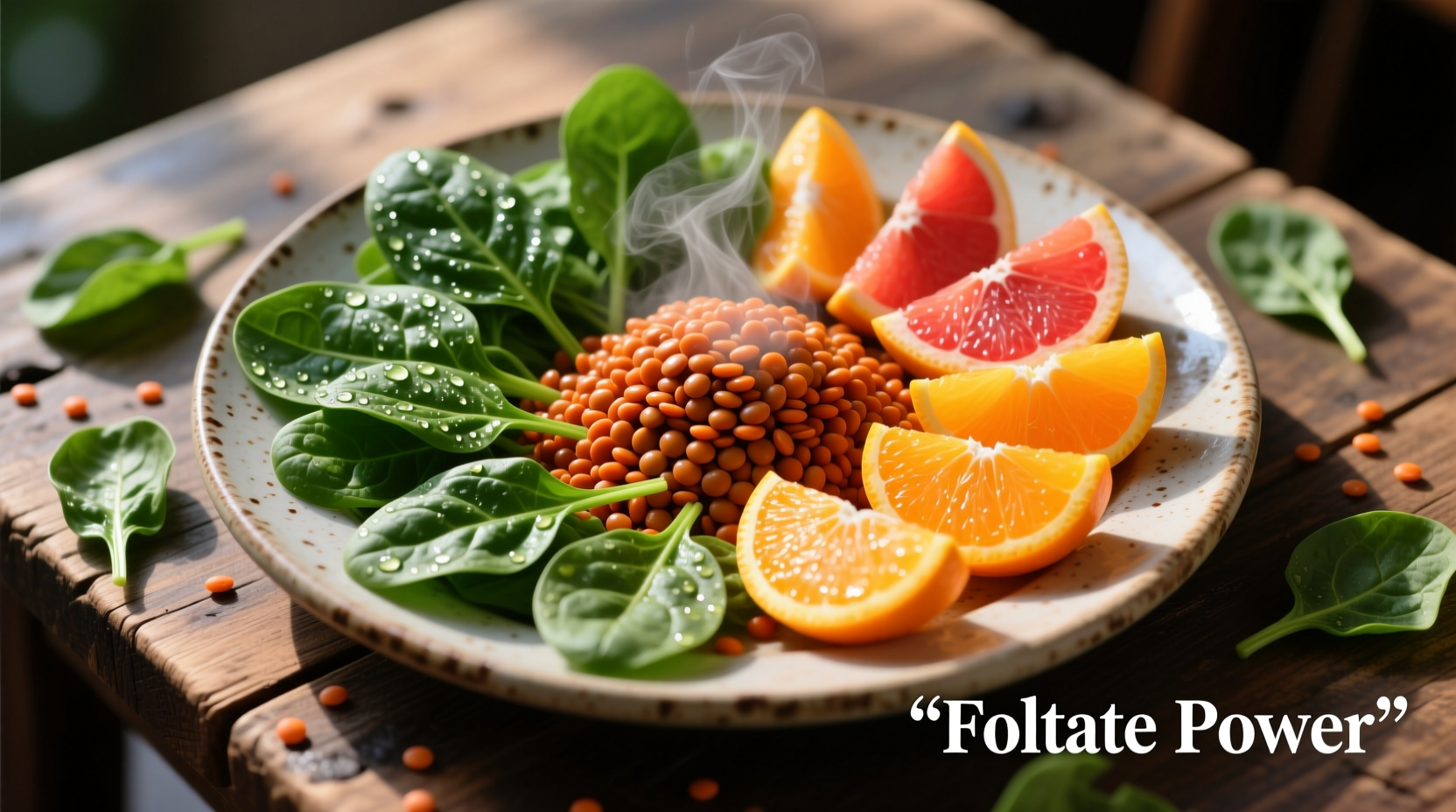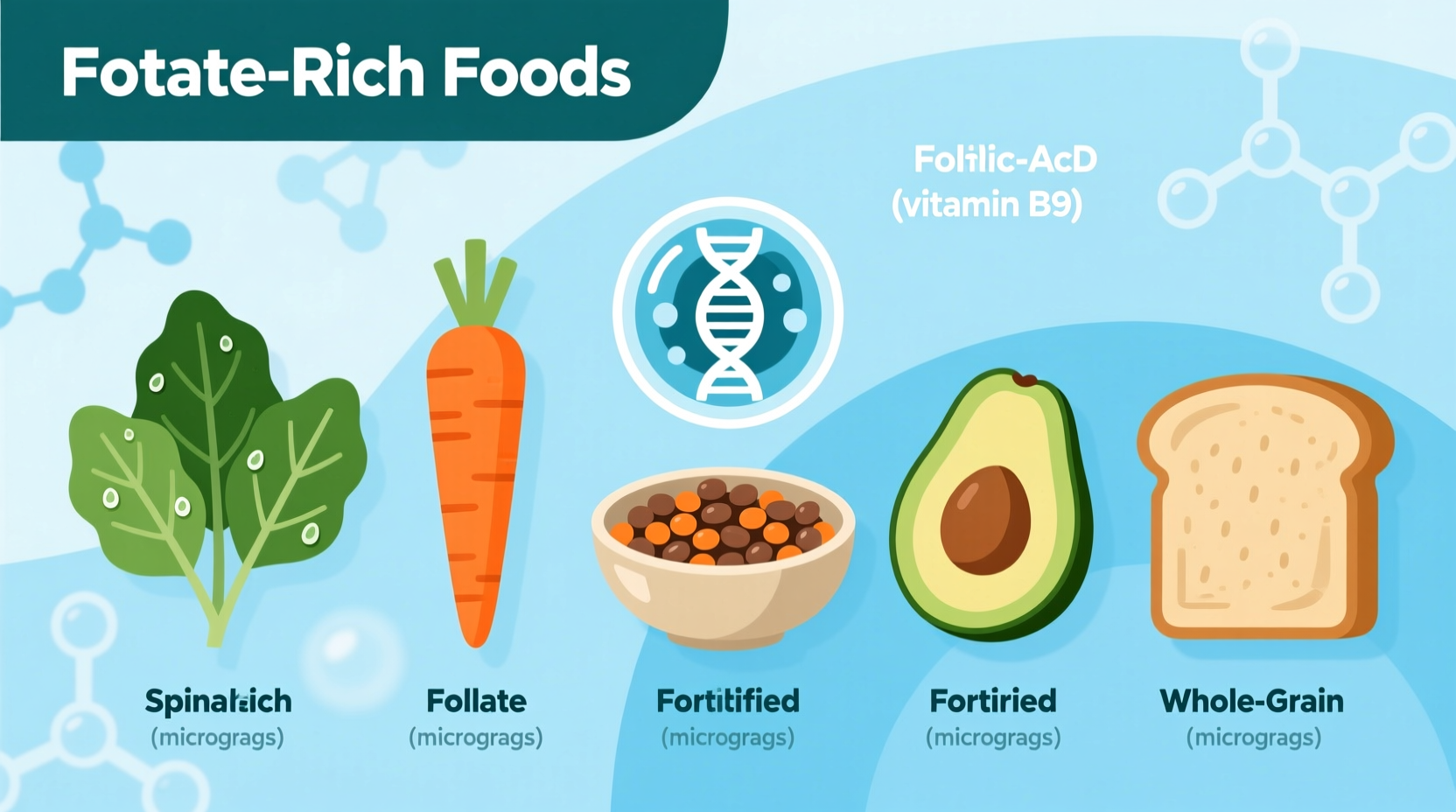Understanding Folate vs. Folic Acid: What You Need to Know
Folate and folic acid are often used interchangeably, but they're not identical. Folate refers to the naturally occurring form of vitamin B9 found in foods, while folic acid is the synthetic version used in supplements and fortified foods. Your body processes these forms differently, with natural folate generally being more readily absorbed from whole foods.
According to the National Institutes of Health Office of Dietary Supplements, "Folate in food is sensitive to heat and water, and up to 90% of it can be lost during cooking, processing, or storage." This explains why consuming some folate-rich foods raw or lightly cooked maximizes your nutrient intake.
Top Food Sources of Folate by Category
When building a folate-rich diet, focus on these powerhouse food groups. The table below shows serving sizes and folate content based on USDA FoodData Central measurements:
| Food | Serving Size | Folate Content (mcg) | % Daily Value |
|---|---|---|---|
| Spinach (cooked) | 1 cup | 263 | 66% |
| Lentils (cooked) | 1 cup | 358 | 90% |
| Black beans (cooked) | 1 cup | 256 | 64% |
| Avocado | 1 medium | 110 | 28% |
| Orange | 1 medium | 40 | 10% |
| Fortified breakfast cereal | 3/4 cup | 100-400 | 25-100% |
Your Daily Folate Requirements Explained
Your folate needs vary based on age, gender, and life stage. The NIH-established Dietary Reference Intakes provide these guidelines:
- Adults (19+ years): 400 mcg DFE (Dietary Folate Equivalents)
- Pregnant women: 600 mcg DFE
- Women who could become pregnant: 400-800 mcg DFE
- Children (1-13 years): 150-300 mcg DFE
The CDC strongly recommends that women capable of becoming pregnant consume 400 mcg of folic acid daily from supplements or fortified foods, in addition to eating folate-rich foods, to prevent neural tube defects. This recommendation is based on decades of research showing that adequate folate status before conception significantly reduces birth defect risks.
Maximizing Folate Absorption from Your Diet
How you prepare and consume folate-rich foods dramatically impacts how much you actually absorb. Consider these evidence-based strategies:
- Eat some greens raw - Cooking destroys some folate, so include raw spinach in salads or smoothies
- Pair with vitamin C - Citrus fruits enhance folate absorption when eaten with legumes
- Avoid excessive alcohol - Alcohol interferes with folate metabolism and increases excretion
- Don't overcook vegetables - Steam rather than boil to preserve water-soluble nutrients
Research published in the American Journal of Clinical Nutrition shows that natural food folate has approximately 50% bioavailability compared to 85% for folic acid in fortified foods. However, whole food sources provide additional nutrients that work synergistically with folate for optimal health benefits.

Folate Needs During Special Life Stages
Certain life stages dramatically increase your folate requirements. Understanding these needs helps you adjust your diet accordingly:
Pregnancy and Preconception
The American College of Obstetricians and Gynecologists states that "Most experts recommend that all women who are trying to conceive take a daily supplement containing 400 to 800 micrograms of folic acid." This is crucial because neural tube development occurs in the first month of pregnancy, often before women know they're pregnant.
Older Adults
As we age, our ability to absorb folate decreases. The NIH notes that "older adults are at increased risk of folate deficiency due to decreased intestinal absorption and potential medication interactions." Including multiple daily sources of folate becomes increasingly important after age 50.
Common Questions About Folate-Rich Foods
Many people have specific questions about incorporating folate into their diets. Here are answers to the most frequent concerns:











 浙公网安备
33010002000092号
浙公网安备
33010002000092号 浙B2-20120091-4
浙B2-20120091-4